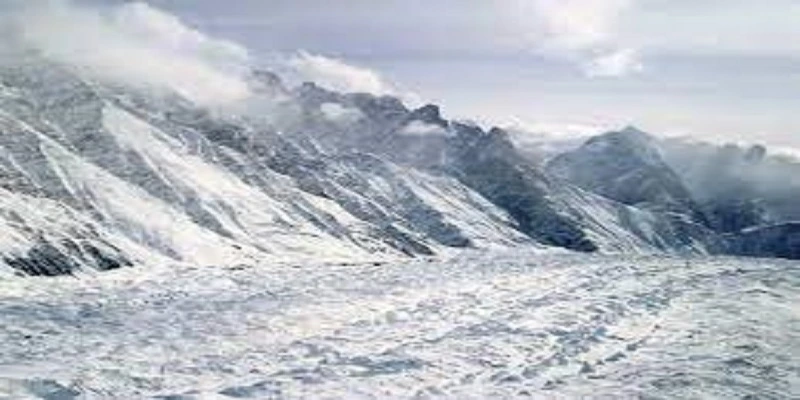Siachen Glacier Battleground for Peace in the Himalayas
The Himalayas, called the "Abode of the Gods", is located in the North of Pakistan and extends towards China and India. Siachen is located on this great mountain terrain. It is the most extensive mountain glacier. It also serves as the source of water for the entire country.
World Heritage became a battlefield due to the war between India and Pakistan in 1984. The border of Siachen was unclear, which was the primary reason for disagreement over bone. Line of Control (LOC) in 1972 that separated Pakistan and India was drawn on Siachen's south. Siachen was marked by the grid line called NJ9842. This zone was known as neutral, but after 1984, both nations declared their sovereignty over the region. This is why, to this day, Siachen does not have clear boundaries, and the forces of both countries were guarding Siachen against further advancement towards each other.
The selfishness of India's motives in this conflict was the leading cause of the issue. Because of its strategic position, India wants to conquer K.2. It also hopes to get the Karakoram Highway and intervene between China and Pakistan. The Indian Army also wanted to advance to K.2; however, the Pakistani Army became an obstacle in their mission. A senior Indian Senior Army official claimed that the Glacier was not only for its strategic value but also as a "5,000 square km reservoir of water" shortly. It can be established from this evidence that in April of 1984, India captured Saltroo Ridge as well as two passes, Sia La (6160m) and Bilafond La (5550m), in the Pakistani region.
All waste and garbage from the military will be put into the Nubra River (which originates from Glacier) that flows into the Shyok River, a part of the Indus, which, with its waters, many depend on. A huge financial burden and injuries on both sides result in a lot of harm to the delicate mountain ecosystem. The latest incident in the "Gyari Sector", in which 140 soldiers from the Pakistan Army died, is also one of the effects of the fragile mountain ecosystem.
PostPostSiachen's relationships with India had the most effective of the conflict. The relationship between the two nations was not friendly, and it was not until the time of its independence. Since the beginning, the Kashmir problem, water disputes, active participation in the cold war, and the conflicts of 1965 and 1971 were the most gruelling facts before the events of Siachen. Both countries are also at odds and even fight with one another following the incident. India suspected Pakistan of the Khalistan issue. Pakistan condemned Indian aid to the Kabul regime. Problem with Indian pirated PAN AM Aircraft, which arrived in Karachi. The issue regarding the Wuller Lake dam on the River Jehlum was contested by Pakistan, the Kargil conflict of 1999, the attack on the Indian Parliament on the 13th of December 2001, and so on. However, both countries wish to resolve their differences in the Siachen Issue and normalize the relations. Foreign Secretaries from both countries met in Islamabad in April of 1985 and brought back the bilateral dialogue. Zia-ul-Haq, along with Rajiv Gandhi, agreed on expanding economic and trade relations and other political issues. The defence secretaries of both countries talked about the Siachen glacier and related issues. They also sign treaties to not attack one another's nuclear facilities and a no-war principle. However, if an agreement was about to be signed and the relations were set to improve, then the political atmosphere changed, and the opportunity was lost.
The idea of a Trans-boundary Peace Park is one of the options that both nations could adopt. This will allow both armies to leave dignifiedly and save billions of dollars. Today, this concept is being implemented by other nations, for instance, the watertonglacier International Peace Park, the Waterton Glacier International Peace Park between Canada and the United States, The KgalagadiTransfrontier Park between South Africa and Botswana and many more.
Gen. V.R. Raghavan offered not to find the most effective solution. Three steps followed this:
- "End the battle without redeployment or disengagement. Let Siachen disappear from the minds of the world. This phase could be for 2 to 3 years.
- Introduce technology-based monitoring and surveillance methods, allowing effective reductions in forces to be discussed.
- Work out a complete demilitarization."
With thousands of armed men confronting one another on the other side of the frontier, the idea of ending the war and Peace Parks seems remote. However, the dawn comes at the end of the darkest time; there may be a sunrise for Siachen.

